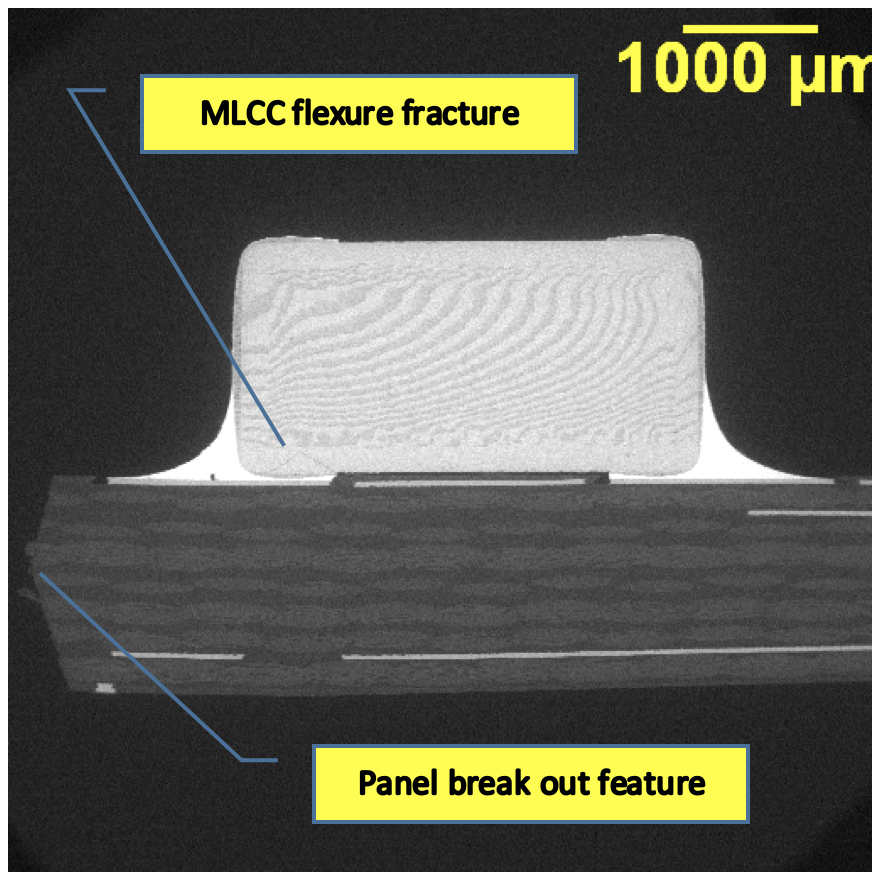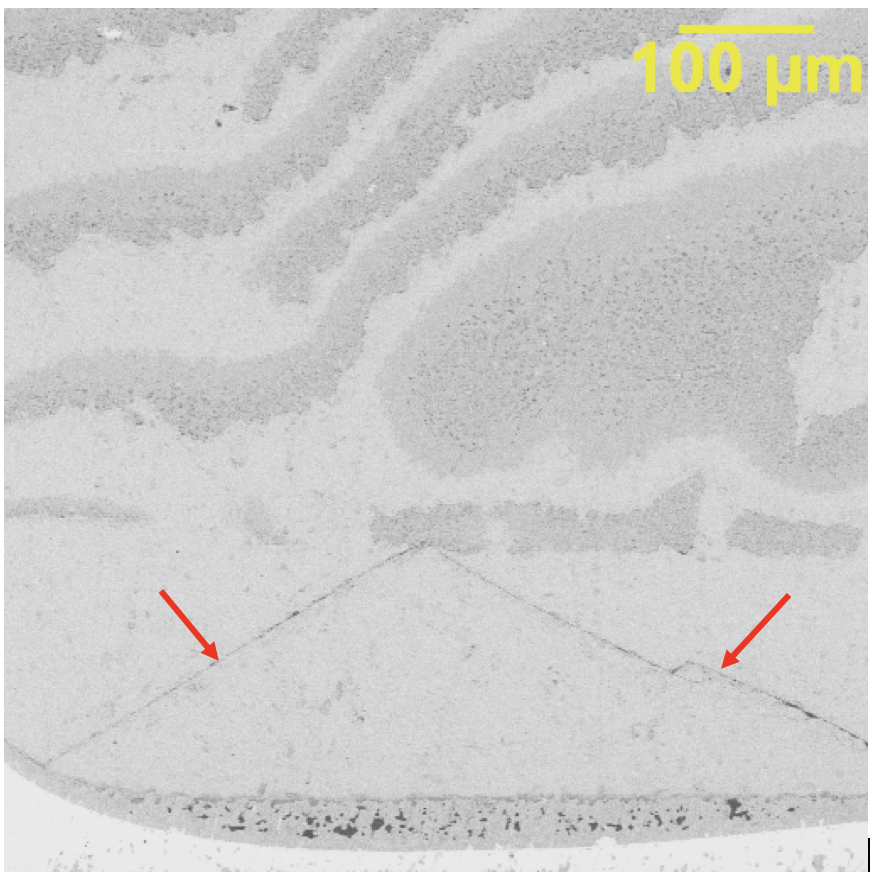ECM (electro-chemical migration) can occur when moisture, voltage bias, and ionic contamination come together, such as was the case for the PWB battery contacts shown in the BSE SEM image below.
Elemental analysis suggested that the ECM residues were primarily copper, but also zinc (from brass?) and nickel (from ENIG finish or nickel under-plate on the connector contact?).
The feature that identifies this as ECM versus plain chemical corrosion is the dendritic structure of the residue as shown in the next image.
Historical data from this laboratory shows that the most significant factor is often moisture, followed by voltage (or local electric field), and finally ionic contamination. The lesson seems to be “keep it dry”.
Check out SEM Lab, Inc. to learn more.

























